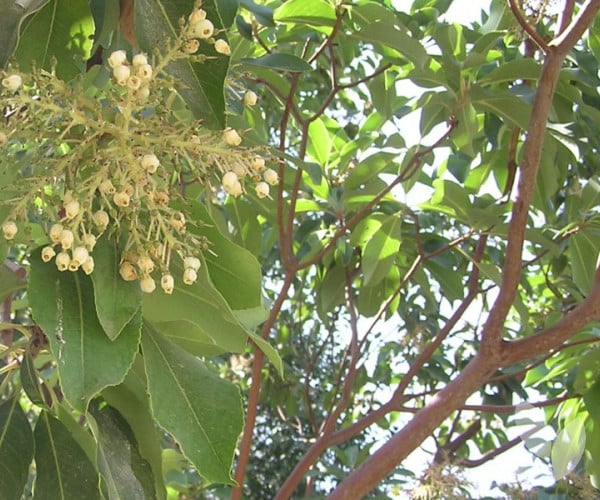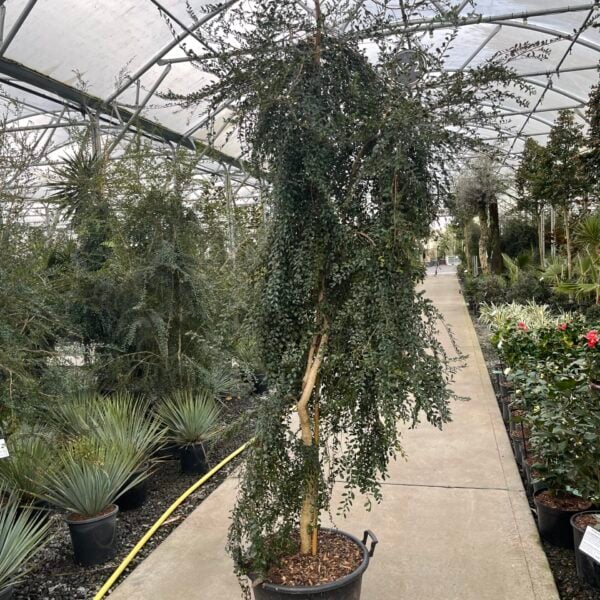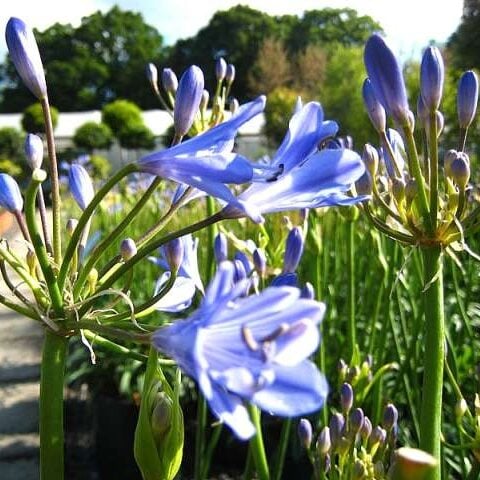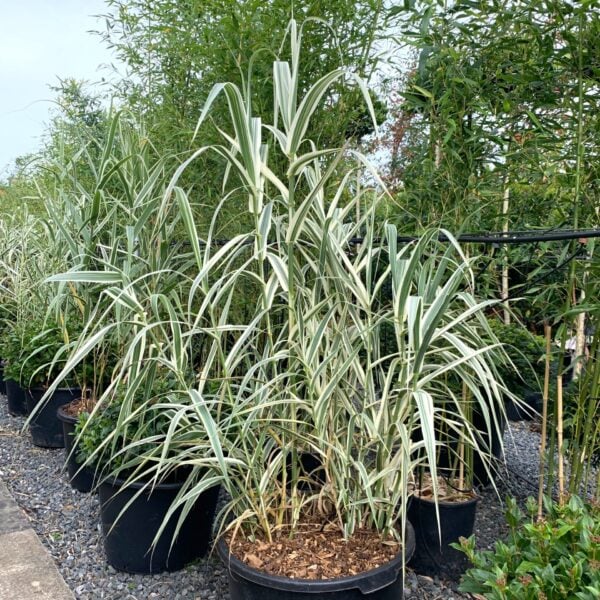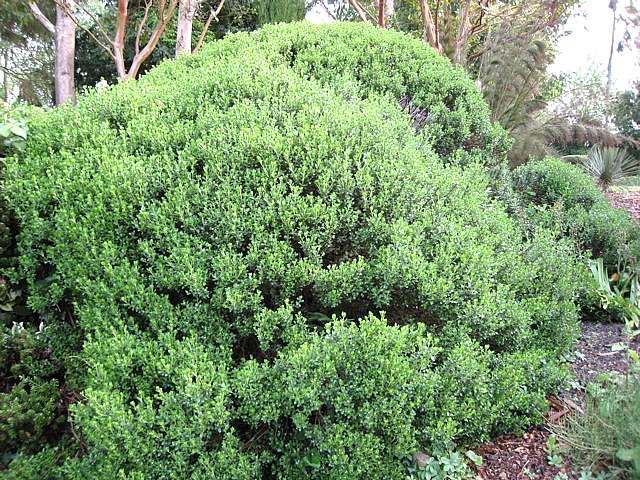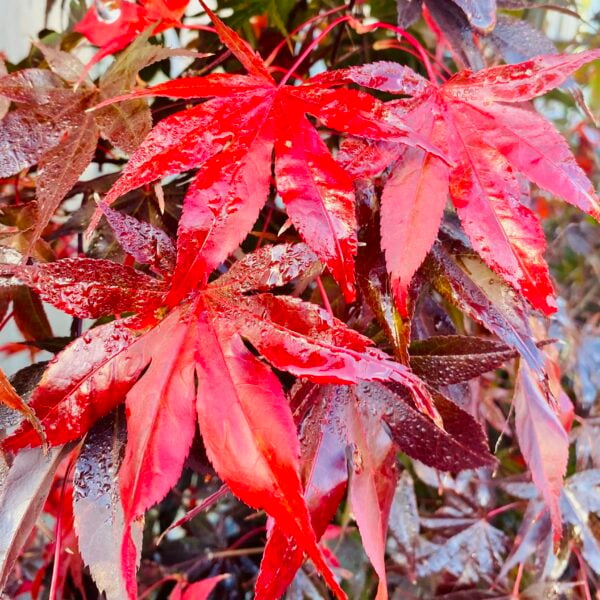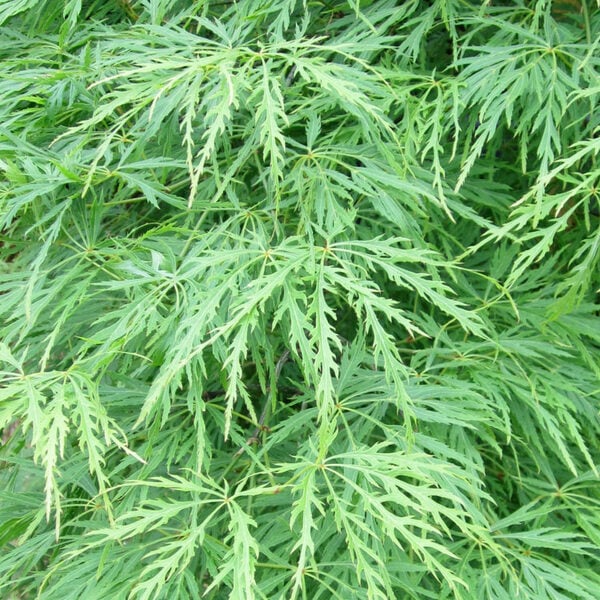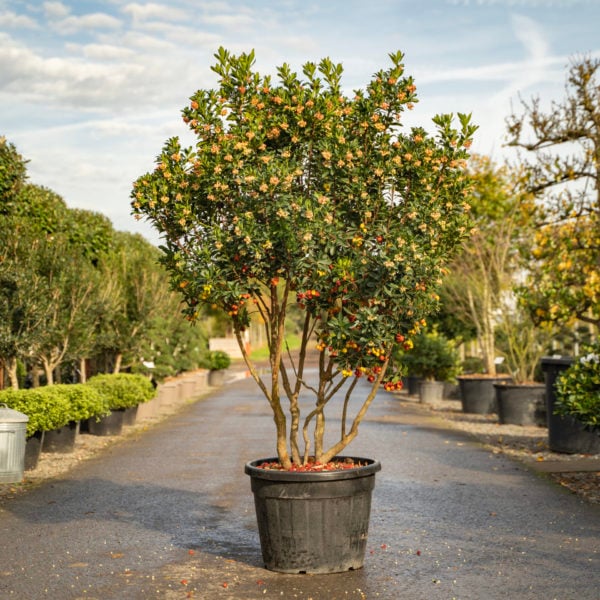Arbutus glandulosa (Texas Medrone)
Smooth coppery bark, autumn flowering. Beautiful shape. Lime tolerance unknown. Well drained soil essential. Please contact us for stock availability and sizes.

Hardiness level Amber
Possibly the most beautiful of all of the strawberry trees, with its large, slightly glaucous leaves and remarkable, smooth, reddy-brown bark (like copper pipe) that peels off to reveal a lime green bark in early summer, that turns to the smooth grey that covers it most of the year, which then turns back to reddy-brown in winter. Got it?
It has the normal white bell-like flowers and occasional strawberry-like fruit and grows to 15ft x 15ft in about 10 years. Despite its southern provenance, it's proved hardy and successful in the stock field of Cooks Farm (the former home of Architectural Plants) and of the relatively few plants we've produced, I know it's thrived from Western Scotland to a friend's garden on the foothills of the Sierra Nevada in Spain. Like all strawberry trees, it needs good drainage. We don't know whether it will tolerate chalk, but it certainly tolerates (likes, even) limey soil.
Its identity is shrouded in mystery. (Is it even an Arbutus? Is it an Arctostaphylos? Who knows?) However, its provenance is not. Two plants were raised by Hilliers Nursery in Winchester in the early 1970s - introduced by a plant expedition to Mexico in 1969. The name of the collector, the exact position in Mexico, and whether they were grown from seed or brought in as plants are all unknown. One was meant to be kept at Hillier Arboretum in Romsey, Hampshire, and the other was meant to be sent to the fledgling Ventnor Botanic Garden on the Isle of Wight. According to Simon Goodenough (the former curator at Ventnor), due to a bureaucratic cock-up, they both got sent to Ventnor and, as far as I know, are still there. They both look identical and we took cuttings from the one we thought the best in 1988/89. Difficult to produce by cutting, but we've had success growing them by micropropagation in the lab.
All strawberry trees are prone to getting black spots on their leaves by the end of winter. It doesn't appear to be a fungal problem, but is aggravated by the plant being less than content - usually either because it's in a pot, or its roots are dying back due to over wet conditions. It's also a part of the natural disintegration and fall of old leaves before the new ones appear in the spring. There seems to be no treatment other than removing the unsightly leaves by hand or being patient. The spring always brings nice fresh new perfect leaves.
N.B. When clipping several plants with the same tool, have a bucket containing a 5% bleach solution and swish your blades around for 30 seconds between plants to sterilise them. This will help avoid the chance of cross contamination of disease.
As with all woody plants, plant high, exposing as much of the taper at the base of the trunk as possible. Allowing soil to accumulate round the base of a tree can be fatal. Keep very well watered when first planted.
Additional Information |
|
|---|---|
| Soil Type | |
| Light | |
| Plant Type | Edible, Evergreen, Flowers, Grown by Us, Screening Plants, Shrubs, Trees |
| Continent of Origin | |
| Specialist Plants | |
| Features | |
| Tree Size | |
| Situation | |
| Flower Colour | |
| Hardiness | |




